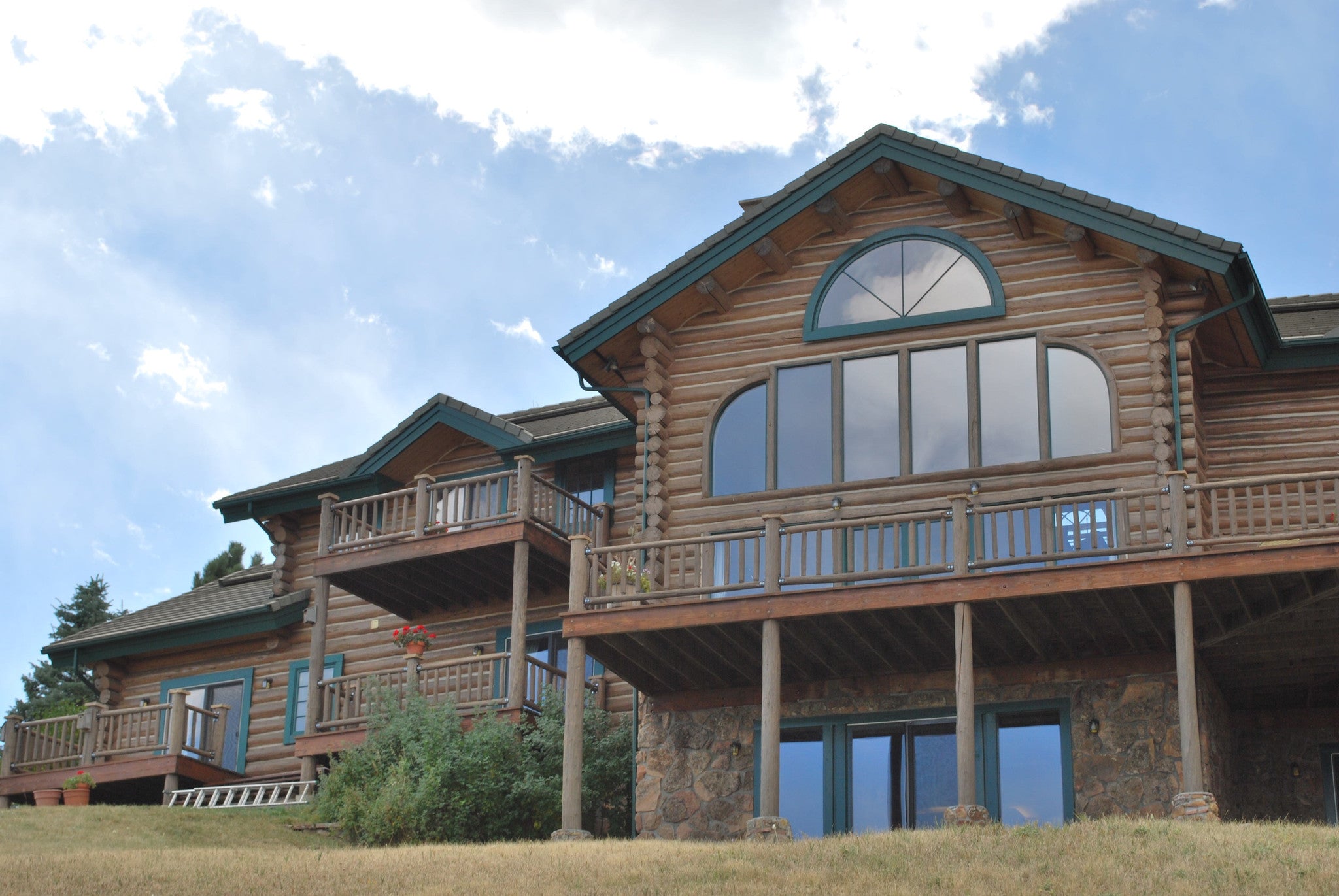Color Stain vs. Clear Finish: Which Should You Choose?

When you're refinishing your log home, you'll have to make an important decision. Will you apply a clear finish or a color stain? Find out how clear finishes and color stains measure up, learn the pros and cons of both, and get ready to decide between the two.
Clear Finish
Whether you're refinishing a newer log home or you've just meticulously restored a vintage home, you want to shine a spotlight on the wood itself. A clear log home finish like UV Guard Advance Clear Wood Finish will do just that while protecting your home's exterior for years.
Pros
Clear finishes excel at fading into the background. Since they're virtually transparent, according to Consumer Reports, clear wood finish products highlight the wood grain itself without adding color. They do add a slight sheen, however, so your log home will look great in the morning light or the evening sunset. Clear wood finishes also repel water, protecting your home from damage due to rain and snow. Products like UV Guard Advance Clear Wood Finish also protects your log home from the sun's ultraviolet (UV) rays, which can damage or discolor stained wood.
Cons
While clear finishes offer numerous benefits, they aren't ideal for all applications. If you want your log home to shine, for example, you might find that a clear finish just doesn't offer enough of a sheen. Since finishes soak into and bond with the wood grain itself, they aren't always easy to remove. If you're taking on a significant log home restoration project, you might find that you can't remove the existing finish. In that case, you'll need to apply an additional topcoat.
Color Stain
When you want to add a touch of color to your log home, don't reach for traditional exterior paint. Instead, opt for a log home stain with a neutral color to give your façade a fresh look.
Pros
Color stains are formulated not to bond with the wood itself, but they do offer a decorative finish. Choose a color stain in tones ranging from sunlight to fawn to bramble to aspenwood to achieve just the right tone. While color stains add a new dimension to your home's exterior, they don't cover over the character of the wood itself. When you apply color stain, you'll just enhance the natural beauty of your log home. When you're ready to refinish, you can easily add a new coat of color stain.
Cons
Since color stains don't bond with the wood, they don't usually have the water or fungus resistance properties that finishes do. That means they often require additional maintenance. You'll typically need to add a varnish or a clear coat to prevent water damage, eliminate mold and mildew, and protect your home from harmful UV rays. When you want your log home to look its best, be sure to weigh the options carefully. Whether you want to add a fresh color or highlight the natural tone of the wood, you can bring out the beauty of your log home's exterior.




